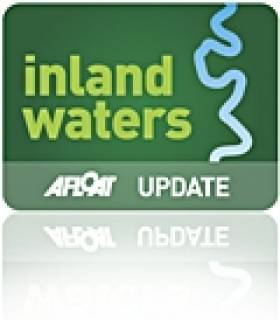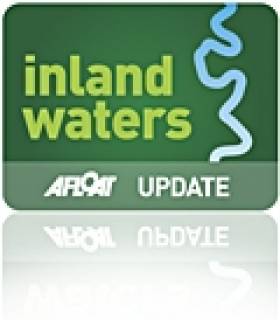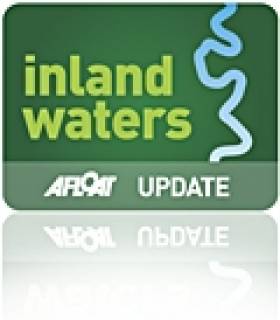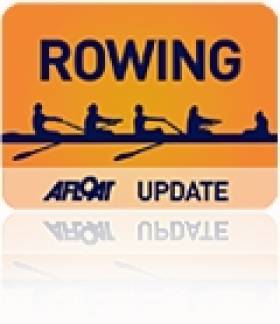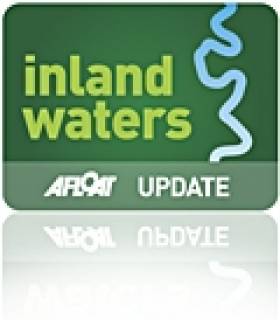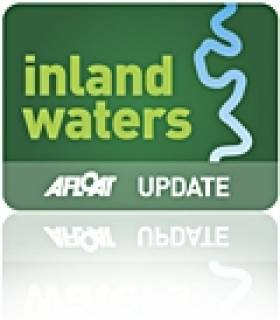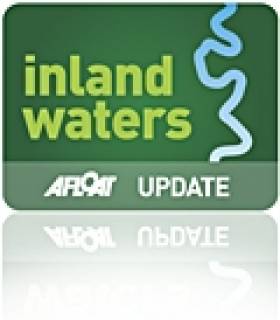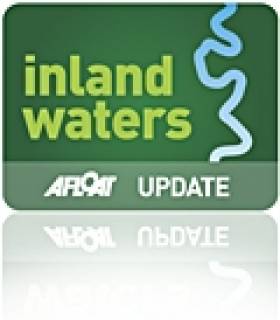| |
|---|
| | | |
| |
| | | | 56th ERNE HEAD OF THE RIVER |
|---|
| | | | | Saturday 2nd March 2013 |
| | | | | Timed |
| | | | | Finishing Crew Mins:Secs |
| | | | | Position No. Crew Identity Class Rowing Time |
| | | | | 1 1 GM/NUIG/St.JoesMS 8 19:30 |
| | | | | 2 3 U.C.D. BC MS 8 19:33 |
| | | | | 3 2 QUBBC MS 8 19:49 |
| | | | | 4 4 DUBC MS 8 19:52 |
| | | | | 5 8 DUBC MI 8 20:08 |
| | | | | 5 = 9 U.C.D. BC A MI 8 20:08 |
| | | | | 7 6 NUIG BC MI 8 20:09 |
| | | | | 8 5 St Michaels RC MS 8 20:30 |
| | | | | 9 13 Neptune RC MJ18 8 20:55 |
| | | | | 10 12 UCD BC B MI 8 21:03 |
| | | | | 11 20 U.C.D. BC A MN 8 21:10 |
| | | | | 12 25 DUBC B MN 8 21:11 |
| | | | | 12 = 14 Portora BC MJ18 8 21:11 |
| | | | | 14 19 QUBBC A MN 8 21:23 |
| | | | | 15 21 NUIG BC MN 8 21:37 |
| | | | | 16 10 St Michaels RC MI 8 21:46 |
| | | | | 17 15 MCB BC MJ18 8 22:09 |
| | | | | 18 30 Garda BC MI 4x 22:11 |
| | | | | 19 18 DUBC A MN 8 22:17 |
| | | | | 19 = 22 Portora/BBC/CAIBC MS 4x 22:17 |
| | | | | 21 33 Bann RC MJ16 8 22:18 |
| | | | | 22 24 U.C.D.L B.C A WS 8 22:24 |
| | | | | 23 16 RBAI BC MJ18 8 22:26 |
| | | | | 24 11 CAIBC MI 8 22:35 |
| | | | | 25 27 QUBBC B MN 8 22:36 |
| | | | | 26 35 MCB BC MJ16 8 22:47 |
| | | | | 27 40 Portora BC MI 4+ 22:57 |
| | | | | 28 23 LSC MS 4x 23:06 |
| | | | | 29 28 DUBC C MN 8 23:08 |
| | | | | 30 17 Blackrock BC MJ18 8 23:19 |
| | | | | 31 41 BBC MM 8 E 23:22 |
| | | | | 32 32 Portora BC MJ16 8 23:36 |
| | | | | 33 42 BRC A MM 8 C 23:38 |
| | | | | 34 43 BRC/BBC B MM 8 E 23:39 |
| | | | | 35 29 U.C.D. BC MI 4x 23:41 |
| | | | | 36 47 Bann RC WI 8 23:44 |
| | | | | 37 45 QULBC WI 8 23:51 |
| | | | | 38 31 U.C.D.L.B.C B WS 8 23:58 |
| | | | | 39 34 CAIBC MJ16 8 24:08 |
| | | | | 40 63 CAIBC MJ18 4+ 24:09 |
| | | | | 41 38 BBC MS 4+ 24:10 |
| | | | | 42 48 Portora BC WJ18 8 24:13 |
| | | | | 43 50 Bann RC MM 8 C 24:31 |
| | | | | 44 49 LVBC MM 8 E 24:42 |
| | | | | 45 44 OCBC/TCBC MM 8 F 24:47 |
| | | | | 46 60 St Michaels BC WS 4+ 24:52 |
| | | | | 47 53 QULBC A WN 8 25:11 |
| | | | | 48 57 BBC WM 8 D 25:13 |
| | | | | 49 59 Portora BC WS 4x 25:19 |
| | | | | 50 62 Bann RC MJ18 4+ 25:42 |
| | | | | 51 52 Molesey B C MM 8 G 25:56 |
| | | | | 52 37 MCB BC B MJ16 8 26:14 |
| | | | | 53 54 BRC WN 8 26:33 |
| | | | | 54 55 QULBC B WN 8 26:48 |
| | | | | 55 58 Neptune BC WS 4x 27:04 |
| | | | | 56 51 Portadown BC MM 8 D 27:09 |
| | | | | 57 66 Portora BC A WJ16 8 27:16 |
| | | | | 58 36 Portora BC B MJ16 8 27:22 |
| | | | | 59 61 BRC WS 4+ 27:29 |
| | | | | 60 65 CAIBC MJ16 4x 27:53 |
| | | | | 61 67 Portora BC B WJ16 8 28:52 |
| | | | | 62 56 QULBC C WN8 29:55 |
| | | | | 63 = 7 QUBBC MI 8 Did Not Row |
| | | | | 63 = 26 U.C.D BC B MN 8 Did Not Row |
| | | | | 63 = 39 DUBC MI 4+ Did Not Row |
| | | | | 63 = 46 NUIG BC WI 8 Did Not Row |
| | | | | 63 = 64 Blackrock BC MJ18 4x Did Not Row |
| | | | | The positions given are those relative to all crews participating. |
| | | | | Positions within a Class are to be determined by inspection. |
| |
#inland – Waterways Ireland advises masters of vessels that The Rivers Agency are undertaking essential lock gate maintenance at Portora lock in Enniskillen, Co. Fermanagh, the only lock on the Erne system. There is expected to be some disruption to traffic over the period of maintenance. Masters are requested to follow instructions given by the onsite safety boat.
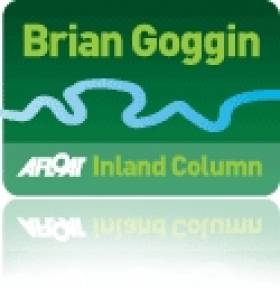
There's an old joke about a Scottish hellfire preacher trying to educate his flock about the punishment awaiting them if they do not mend their ways. He tells them that the ungodly will find themselves in the flames of hell, suffering unimaginable torments, and that they will cry to the lord for mercy, saying "Laird, laird, spare us: we didna ken whit torments awaited us." And, he tells them, the lord in his infinite goodness and mercy will gaze down upon them from heaven and he will say unto them "Well, ye ken noo".
WI and the canals
Some folk with boats on the Royal, Grand and Barrow may be feeling a bit like the ungodly at the moment, with the role of the lord being played by Waterways Ireland (WI). It seems that, as predicted here, WI is finally moving to take control of its canals.
Several new initiatives are under way, more are promised, some are predicted — and all in all it probably amounts to the biggest set of changes to boating on the canals since the end of commercial carrying. Furthermore, there are suggestions that the canals are being seen as a pilot study: that some of the changes will be applied to the Shannon and the Erne in years to come.
Cheap boating
Until now, you could keep a boat on the canals for e126 a year. That covered as many miles as you wanted and passage through as many locks as you wanted; it also covered mooring for the year. There is a bye-law that says you must not stay in one place for more than five days at a time, but it was widely ignored and scarcely ever enforced.
So you could, for example, keep your boat near Dublin, perhaps at a location close to a railway station, and live on it all year round. Or you could keep it there in the winter and move to the Shannon end for the summer, basing your boat at Shannon Harbour (Grand Canal), just one or two locks away from the Shannon, or at Richmond Harbour (Royal Canal), just one lock away. The cost was well below that of a Shannon marina berth.
The bye-laws simply did not reflect the ways in which people actually used boats, either as pleasure craft or for living on. And the charges to users were well below the cost of competitors' products (e.g. commercial marinas' charges), well below the charges on UK waterways and, in particular, well below the cost of running the waterways.
Costs to taxpayers
In the year ended 31 December 2010, WI's operating income, excluding "net deferred funding for pensions", was e547,000. That's the total for all waterways, coming from licences (e34,000), property (e210,000), operations (e202,000), interest (e1,000) and other (e100,000). The programme costs (excluding staff and other costs) were:
• Barrow e723,000
• Grand e2,074,000
• Royal e2,873,000
• the rest e2,098,000.
So the Grand, by itself, cost almost as much as the Lower Bann, the Erne, the Shannon and the Shannon–Erne Waterway put together. The Barrow, Grand and Royal accounted for 73% of the costs but for a far lower proportion of the boats and the income.
I don't intend that as a reflection on the efficiency with which the different waterways are operated: canals are entirely different in nature to river and lake navigations, with far more waterways infrastructure, and will cost more to run. But I give the figures for two reasons. First, they show that, if WI wanted to reduce the gap between income and expenditure, it would inevitably focus on the canals. Second, the figures give some idea of the extent of the subsidy being provided by the taxpayer to canal-based boaters: if there are, say, a thousand boats based on the canals and Barrow, each of them is being subsidised by (on average) about e5,500 a year from the taxpayer.
Costs to boaters
I'm always inclined to look at the economic angle, but WI doesn't dwell on it. Nonetheless it will increase the costs to boaters and will also increase WI's income. Instead of a single e126 annual charge, boaters will now pay
• e126 for a Combined Mooring
& Passage Permit
• e152 for an Extended Mooring
Permit (EMP)
• e250 as a damage deposit,
which I presume will be rolled
forward in succeeding years.
Furthermore, boaters applying for Extended Mooring Permits (EMPs) must produce insurance certificates; for anyone currently uninsured, that will be an extra cost, as will any survey and remedial work required.
There will be other extra costs, of which more below, in future years.
Controlling mooring
At the core of WI's current activity is its taking control of the banks. It is marking out lengths that can be allocated to boats; it will allocate those lengths to those applying for EMPs. It does not guarantee that boaters will get their preferred spaces, or that they will get the same space every year. But once a space has been allocated, it is reserved for one boat for the year and cannot be used by another. That probably seems obvious to anyone renting a marina berth but it will be a new practice on the canals.
The EMP system was applied first at Rathangan and Vicarstown on the Barrow Line, between Lock 34 and Griffith Bridge on the Grand and at Confey (Leixlip), 15th Lock and 45th Lock (near Richmond Harbour) on the Royal. The second batch will include places in the Grand Canal Dock in Dublin, at Pike Bridge, near Maynooth, and at Abbeyshrule on the Royal and near Lock 34 on the Royal. There will be more batches through to spring 2013; full details on http://www.waterwaysireland.org; select New Canal Permit System from the menu on the left.
Continuous Cruisers (as they're called in Britain), folk who stay no more than five days in one location, will not be required to have EMPs.
So what happens if a boater doesn't apply for an EMP but doesn't cruise continuously? If I'm reading the bye-laws correctly, WI has the power to remove a boat, store it and, if necessary, sell it, charging the owner for the costs of doing so.
Information or consultation?
There has been some criticism of WI for not holding consultation meetings before beginning to implement its new policy. My own view is that WI was right: such meetings produce more heat than light, with too much attention on minor individual matters and not enough useful comment on the principles. There is much to be said for creating facts on the ground.
But if consultation has been restricted, the flow of information has not. In fact WI has used its website very effectively, setting out its plans, explaining the procedures and providing FAQs with useful, not PR-type, answers. Whoever has been in charge of that exercise deserves to be commended.
Insurance and dry docking
One thing WI has communicated is that there is more to come.
From 2015 Waterways Ireland will be introducing the requirement for boats needing permits and wishing to use the canals to have a current hull survey to provide evidence that the boat is in good condition. [...] Your attention is being drawn to this requirement now to allow you time to prepare for 2015. [...]
The Licensee undertakes to have regular inspections of the gas and electric services of his Boat as required to ensure these are kept in a safe and serviceable condition. [...]
All Boats must carry adequate fire fighting equipment and have same serviced as per the manufacturer's recommendations. [...]
It is not permitted to re-fuel Boats at an extended mooring.
The requirement for insurance will probably mean more boats needing hull surveys; there is an explicit requirement for such surveys from 2015 onwards. That will put extra pressure on the dry docks, where WI has already introduced restrictions on the boats that can use them and the work that can be carried out. There is, in my view, an urgent and growing need for well-capitalised, well-managed boatyards along all our waterways. The requirements also suggest a need for more fuel sellers along the canals; as far as I know the only one is at Lowtown.
The Shannon and the Erne
The new arrangements will mean better management of the canals, safer boats and more income from WI, all desiderata. But the real excitement would come with their extension to the Shannon and the Erne. The legal basis for charging might have to be different, but WI must surely be planning to raise much more money from Shannon and Erne boaters. The current Shannon lock and bridge fees are pathetically small, hardly worth collecting, and they are not paid at all by those who stay on the lakes.
I am writing this before the Republic's budget is published, but I cannot imagine that it will contain good news for WI. I suspect that it will have to raise much more money itself, and that means from charges to various types of users. Robin Evans, chief executive of Canal & River Trust, which runs the former British Waterways navigations in England and Wales, said recently that his organisation gets only 35% of its funding from the State. The Irish Government must look enviously at that figure.
But it must consider the price elasticity of demand for inland boating. Usage, as measured (however imperfectly) by Shannon lock and bridge passages, has been falling over the last ten years. The chart below shows the figures for the first ten months of each year: at time of writing, figures for November and December 2012 were not available.
It may be time to reinvent the Shannon once again.
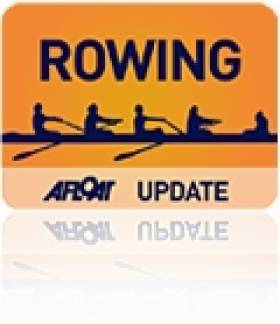
ROWING: Over 60 crews from all over Ireland will descend on Lough Erne tomorrow for the Erne Head of the River. This year competition looks set to be fierce. The biggest battle of the day should be between NUI Galway and Queen’s men’s senior eights. This will be the first time they have met this season, and both will be out to show their dominance.
From its humble beginnings in 1957, when just four crews took part, the Erne Head has gone from strength to strength, and the number of crews taking part has steadily increased. The organisers contend that at six kilometres tomorrow’s is the longest rowing event in Ireland, and the gruelling course provides athletes with the opportunity to test their both their fitness and their mental strength after winter training.
With a number of sharp bends to contend with, it is also the perfect stage for coxswains to show off their steering skills and their ability to get the best out of their crew when they start to tire. And of course, as crews battle to overtake each other, it provides plenty of excitement for those watching from the banks of the Erne.
The hosts of the event, Portora, will be approaching the event on the back of a double success at the Fermanagh Sports Awards where Derek Holland won Coach of the Year and the Boat Club at Portora Royal were joint winners of the Junior Team of the Year award.
#Erne – As a result of fast river flow On the Erne system at Enniskillen, Portora Lock is presently closed. Also, a defective sluice gate on the weir means there are fast flow rates in the vicinity of the lock. Waterways Ireland has issued a warning to Masters to proceed with caution if navigating in the vicinity of the lock.
#ERNE – Boats owners using public moorings on the river Erne in excess of two days are liable to prosecution according to a Waterways Ireland notice issued today. The authority advises masters and owners of vessels and boats on the Erne Navigation that procedures to initiate prosecutions for contravention of Bye-law 19 of Lough Erne (Navigation) are now in place. The bye-law states "No master or owner shall permit a vessel or boat to remain moored at or in the vicinity of any public mooring for a continuous period in excess of 48 hours save that a new period of 48 hours shall be deemed to commence following an absence from the mooring for a period of four hours or more".
Waterways Ireland is advising masters and owners that a marathon style canoe and kayak event will take place on Sun 18th Sep 2011from 1200hrs until 1500hrs on the Enniskillen to Culkey section of the Erne System.
Competitors will race from the Round "O" in Enniskillen, to a point 5km upstream and return to the "Finish Line" at the Round "O".
Masters are requested to note any advice or instructions given by the event organisers and marshals and to give competitors a wide berth at all times.
Vessels should proceed at slow speed and with minimum wash when passing canoes and kayaks.
The Irish Coast Guard
The Irish Coast Guard is Ireland's fourth 'Blue Light' service (along with An Garda Síochána, the Ambulance Service and the Fire Service). It provides a nationwide maritime emergency organisation as well as a variety of services to shipping and other government agencies.
The purpose of the Irish Coast Guard is to promote safety and security standards, and by doing so, prevent as far as possible, the loss of life at sea, and on inland waters, mountains and caves, and to provide effective emergency response services and to safeguard the quality of the marine environment.
The Irish Coast Guard has responsibility for Ireland's system of marine communications, surveillance and emergency management in Ireland's Exclusive Economic Zone (EEZ) and certain inland waterways.
It is responsible for the response to, and co-ordination of, maritime accidents which require search and rescue and counter-pollution and ship casualty operations. It also has responsibility for vessel traffic monitoring.
Operations in respect of maritime security, illegal drug trafficking, illegal migration and fisheries enforcement are co-ordinated by other bodies within the Irish Government.
On average, each year, the Irish Coast Guard is expected to:
- handle 3,000 marine emergencies
- assist 4,500 people and save about 200 lives
- task Coast Guard helicopters on missions
The Coast Guard has been around in some form in Ireland since 1908.
Coast Guard helicopters
The Irish Coast Guard has contracted five medium-lift Sikorsky Search and Rescue helicopters deployed at bases in Dublin, Waterford, Shannon and Sligo.
The helicopters are designated wheels up from initial notification in 15 minutes during daylight hours and 45 minutes at night. One aircraft is fitted and its crew trained for under slung cargo operations up to 3000kgs and is available on short notice based at Waterford.
These aircraft respond to emergencies at sea, inland waterways, offshore islands and mountains of Ireland (32 counties).
They can also be used for assistance in flooding, major inland emergencies, intra-hospital transfers, pollution, and aerial surveillance during daylight hours, lifting and passenger operations and other operations as authorised by the Coast Guard within appropriate regulations.
Irish Coastguard FAQs
The Irish Coast Guard provides nationwide maritime emergency response, while also promoting safety and security standards. It aims to prevent the loss of life at sea, on inland waters, on mountains and in caves; and to safeguard the quality of the marine environment.
The main role of the Irish Coast Guard is to rescue people from danger at sea or on land, to organise immediate medical transport and to assist boats and ships within the country's jurisdiction. It has three marine rescue centres in Dublin, Malin Head, Co Donegal, and Valentia Island, Co Kerry. The Dublin National Maritime Operations centre provides marine search and rescue responses and coordinates the response to marine casualty incidents with the Irish exclusive economic zone (EEZ).
Yes, effectively, it is the fourth "blue light" service. The Marine Rescue Sub-Centre (MRSC) Valentia is the contact point for the coastal area between Ballycotton, Co Cork and Clifden, Co Galway. At the same time, the MRSC Malin Head covers the area between Clifden and Lough Foyle. Marine Rescue Co-ordination Centre (MRCC) Dublin covers Carlingford Lough, Co Louth to Ballycotton, Co Cork. Each MRCC/MRSC also broadcasts maritime safety information on VHF and MF radio, including navigational and gale warnings, shipping forecasts, local inshore forecasts, strong wind warnings and small craft warnings.
The Irish Coast Guard handles about 3,000 marine emergencies annually, and assists 4,500 people - saving an estimated 200 lives, according to the Department of Transport. In 2016, Irish Coast Guard helicopters completed 1,000 missions in a single year for the first time.
Yes, Irish Coast Guard helicopters evacuate medical patients from offshore islands to hospital on average about 100 times a year. In September 2017, the Department of Health announced that search and rescue pilots who work 24-hour duties would not be expected to perform any inter-hospital patient transfers. The Air Corps flies the Emergency Aeromedical Service, established in 2012 and using an AW139 twin-engine helicopter. Known by its call sign "Air Corps 112", it airlifted its 3,000th patient in autumn 2020.
The Irish Coast Guard works closely with the British Maritime and Coastguard Agency, which is responsible for the Northern Irish coast.
The Irish Coast Guard is a State-funded service, with both paid management personnel and volunteers, and is under the auspices of the Department of Transport, Tourism and Sport. It is allocated approximately 74 million euro annually in funding, some 85 per cent of which pays for a helicopter contract that costs 60 million euro annually. The overall funding figure is "variable", an Oireachtas committee was told in 2019. Other significant expenditure items include volunteer training exercises, equipment, maintenance, renewal, and information technology.
The Irish Coast Guard has four search and rescue helicopter bases at Dublin, Waterford, Shannon and Sligo, run on a contract worth 50 million euro annually with an additional 10 million euro in costs by CHC Ireland. It provides five medium-lift Sikorsky S-92 helicopters and trained crew. The 44 Irish Coast Guard coastal units with 1,000 volunteers are classed as onshore search units, with 23 of the 44 units having rigid inflatable boats (RIBs) and 17 units having cliff rescue capability. The Irish Coast Guard has 60 buildings in total around the coast, and units have search vehicles fitted with blue lights, all-terrain vehicles or quads, first aid equipment, generators and area lighting, search equipment, marine radios, pyrotechnics and appropriate personal protective equipment (PPE). The Royal National Lifeboat Institution (RNLI) and Community Rescue Boats Ireland also provide lifeboats and crews to assist in search and rescue. The Irish Coast Guard works closely with the Garda Siochána, National Ambulance Service, Naval Service and Air Corps, Civil Defence, while fishing vessels, ships and other craft at sea offer assistance in search operations.
The helicopters are designated as airborne from initial notification in 15 minutes during daylight hours, and 45 minutes at night. The aircraft respond to emergencies at sea, on inland waterways, offshore islands and mountains and cover the 32 counties. They can also assist in flooding, major inland emergencies, intra-hospital transfers, pollution, and can transport offshore firefighters and ambulance teams. The Irish Coast Guard volunteers units are expected to achieve a 90 per cent response time of departing from the station house in ten minutes from notification during daylight and 20 minutes at night. They are also expected to achieve a 90 per cent response time to the scene of the incident in less than 60 minutes from notification by day and 75 minutes at night, subject to geographical limitations.
Units are managed by an officer-in-charge (three stripes on the uniform) and a deputy officer in charge (two stripes). Each team is trained in search skills, first aid, setting up helicopter landing sites and a range of maritime skills, while certain units are also trained in cliff rescue.
Volunteers receive an allowance for time spent on exercises and call-outs. What is the difference between the Irish Coast Guard and the RNLI? The RNLI is a registered charity which has been saving lives at sea since 1824, and runs a 24/7 volunteer lifeboat service around the British and Irish coasts. It is a declared asset of the British Maritime and Coast Guard Agency and the Irish Coast Guard. Community Rescue Boats Ireland is a community rescue network of volunteers under the auspices of Water Safety Ireland.
No, it does not charge for rescue and nor do the RNLI or Community Rescue Boats Ireland.
The marine rescue centres maintain 19 VHF voice and DSC radio sites around the Irish coastline and a digital paging system. There are two VHF repeater test sites, four MF radio sites and two NAVTEX transmitter sites. Does Ireland have a national search and rescue plan? The first national search and rescue plan was published in July, 2019. It establishes the national framework for the overall development, deployment and improvement of search and rescue services within the Irish Search and Rescue Region and to meet domestic and international commitments. The purpose of the national search and rescue plan is to promote a planned and nationally coordinated search and rescue response to persons in distress at sea, in the air or on land.
Yes, the Irish Coast Guard is responsible for responding to spills of oil and other hazardous substances with the Irish pollution responsibility zone, along with providing an effective response to marine casualties and monitoring or intervening in marine salvage operations. It provides and maintains a 24-hour marine pollution notification at the three marine rescue centres. It coordinates exercises and tests of national and local pollution response plans.
The first Irish Coast Guard volunteer to die on duty was Caitriona Lucas, a highly trained member of the Doolin Coast Guard unit, while assisting in a search for a missing man by the Kilkee unit in September 2016. Six months later, four Irish Coast Guard helicopter crew – Dara Fitzpatrick, Mark Duffy, Paul Ormsby and Ciarán Smith -died when their Sikorsky S-92 struck Blackrock island off the Mayo coast on March 14, 2017. The Dublin-based Rescue 116 crew were providing "top cover" or communications for a medical emergency off the west coast and had been approaching Blacksod to refuel. Up until the five fatalities, the Irish Coast Guard recorded that more than a million "man hours" had been spent on more than 30,000 rescue missions since 1991.
Several investigations were initiated into each incident. The Marine Casualty Investigation Board was critical of the Irish Coast Guard in its final report into the death of Caitriona Lucas, while a separate Health and Safety Authority investigation has been completed, but not published. The Air Accident Investigation Unit final report into the Rescue 116 helicopter crash has not yet been published.
The Irish Coast Guard in its present form dates back to 1991, when the Irish Marine Emergency Service was formed after a campaign initiated by Dr Joan McGinley to improve air/sea rescue services on the west Irish coast. Before Irish independence, the British Admiralty was responsible for a Coast Guard (formerly the Water Guard or Preventative Boat Service) dating back to 1809. The West Coast Search and Rescue Action Committee was initiated with a public meeting in Killybegs, Co Donegal, in 1988 and the group was so effective that a Government report was commissioned, which recommended setting up a new division of the Department of the Marine to run the Marine Rescue Co-Ordination Centre (MRCC), then based at Shannon, along with the existing coast radio service, and coast and cliff rescue. A medium-range helicopter base was established at Shannon within two years. Initially, the base was served by the Air Corps.
The first director of what was then IMES was Capt Liam Kirwan, who had spent 20 years at sea and latterly worked with the Marine Survey Office. Capt Kirwan transformed a poorly funded voluntary coast and cliff rescue service into a trained network of cliff and sea rescue units – largely voluntary, but with paid management. The MRCC was relocated from Shannon to an IMES headquarters at the then Department of the Marine (now Department of Transport) in Leeson Lane, Dublin. The coast radio stations at Valentia, Co Kerry, and Malin Head, Co Donegal, became marine rescue-sub-centres.
The current director is Chris Reynolds, who has been in place since August 2007 and was formerly with the Naval Service. He has been seconded to the head of mission with the EUCAP Somalia - which has a mandate to enhance Somalia's maritime civilian law enforcement capacity – since January 2019.
- Achill, Co. Mayo
- Ardmore, Co. Waterford
- Arklow, Co. Wicklow
- Ballybunion, Co. Kerry
- Ballycotton, Co. Cork
- Ballyglass, Co. Mayo
- Bonmahon, Co. Waterford
- Bunbeg, Co. Donegal
- Carnsore, Co. Wexford
- Castlefreake, Co. Cork
- Castletownbere, Co. Cork
- Cleggan, Co. Galway
- Clogherhead, Co. Louth
- Costelloe Bay, Co. Galway
- Courtown, Co. Wexford
- Crosshaven, Co. Cork
- Curracloe, Co. Wexford
- Dingle, Co. Kerry
- Doolin, Co. Clare
- Drogheda, Co. Louth
- Dun Laoghaire, Co. Dublin
- Dunmore East, Co. Waterford
- Fethard, Co. Wexford
- Glandore, Co. Cork
- Glenderry, Co. Kerry
- Goleen, Co. Cork
- Greencastle, Co. Donegal
- Greenore, Co. Louth
- Greystones, Co. Wicklow
- Guileen, Co. Cork
- Howth, Co. Dublin
- Kilkee, Co. Clare
- Killala, Co. Mayo
- Killybegs, Co. Donegal
- Kilmore Quay, Co. Wexford
- Knightstown, Co. Kerry
- Mulroy, Co. Donegal
- North Aran, Co. Galway
- Old Head Of Kinsale, Co. Cork
- Oysterhaven, Co. Cork
- Rosslare, Co. Wexford
- Seven Heads, Co. Cork
- Skerries, Co. Dublin Summercove, Co. Cork
- Toe Head, Co. Cork
- Tory Island, Co. Donegal
- Tramore, Co. Waterford
- Waterville, Co. Kerry
- Westport, Co. Mayo
- Wicklow
- Youghal, Co. Cork
Sources: Department of Transport © Afloat 2020
| |


























